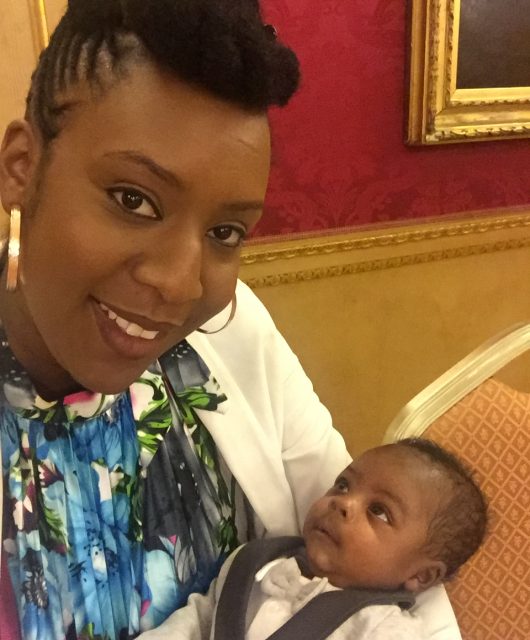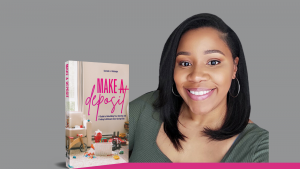For many women, becoming a mother is relatively straight forward. Meet man of your dreams, get married and start a family.
Others swear that they only need to look at a man and they get pregnant! However, for many, it’s not as easy as that. As the broody feelings start, what happens when you can’t have a baby? Kemi Olowe shares her experience of the heartache, navigating the health system, and the ultimate joy of her five-year journey to motherhood.
At 26, I married my best friend! We initially agreed for me to stay on the pill and wait a couple of years before trying to start a family. However, at the time, a Pharmacist friend of mine advised me to stop taking the pill as it takes a while for it to leave your system, particularly as I had PCOS. We followed this advice.
 After a year and a half, I visited my GP again and demanded to be referred for fertility assistance. At the appointment, we were told that the standard NHS timeframe for intervention was 18 months. It seemed like a lifetime but we didn’t have a choice. However, one week before our follow-up appointment, I found out that I was pregnant. I was over the moon and could not call the hospital quickly enough to let them know that we would no longer need their assistance.
After a year and a half, I visited my GP again and demanded to be referred for fertility assistance. At the appointment, we were told that the standard NHS timeframe for intervention was 18 months. It seemed like a lifetime but we didn’t have a choice. However, one week before our follow-up appointment, I found out that I was pregnant. I was over the moon and could not call the hospital quickly enough to let them know that we would no longer need their assistance.
My happiness was short lived because for the next two weeks, I experienced sharp pains and spotting. One night, it became so unbearable that I was taken to hospital. The following morning I was given the news that I had miscarried… My heart was broken. I had waited so long to be pregnant and only got to experience it for two weeks. The doctors told me not to worry as I had conceived naturally and could try again after six months.
Time rolled on. 2014 arrived and still nothing had happened. My GP gave me a drug called Metformin which is prescribed to those with diabetes. It helps women with PCOS as it can restore your menstrual cycle and stimulate ovulation. Women with PCOS are at risk of developing diabetes due to the sometimes high insulin levels and Metformin helps regulate the glucose levels in our blood. Unfortunately, I had a very bad reaction to the drug which saw me hospitalised and as a result, I stopped taking it.
So, what next? When I quizzed my GP, he said: “You’re so young, what’s the rush?” “You have been pregnant before so there’s no need to worry.” Six months after this I insisted my GP refer me again for fertility assistance and the referral was reluctantly made. My husband and I had already visited a private clinic and were prepared to pay for the treatment but were told that we should apply for NHS funding as we were eligible. Once the funding was secured, we began treatment with the private clinic, using the funding, as there was no waiting list and we felt the quality of treatment would be better.
I naively went into the process of IVF thinking I would get pregnant first time round… I was wrong! Due to my PCOS, I suffered with hyper stimulation – a condition where your ovaries are overstimulated and cause excruciating stomach pain. I was hospitalised for three days under morphine pain control. Although we collected 21 eggs, only one made it to the day five blastocyst stage for transfer, it resulted in a negative pregnancy test result. Following this disappointment, we had to wait three months before I could begin my second IVF cycle. We had to adopt a more cautious approach to minimise the possibility of hyper stimulating again. Again, twenty eggs were collected, but a few hours after the collection, I was told that the cycle had been cancelled as I was in the early stages of hyper stimulation. I was devastated and sent home with emergency numbers just in case…
I ended up being hospitalised again, this time for five days and the pain was even more severe than the last time. We were advised that the clinic would call us daily to let us know how many fertilised embryos we had and how they were developing. For the best results, the clinic wanted the embryos to continue growing until day five (blastocyst) before freezing.
The cycle continued. After three months, I prepared myself for 10 days of injections before my frozen embryo transfer. Thankfully, this procedure was not as invasive as the previous cycle but it sadly resulted in another negative pregnancy test. I was devastated as I felt like we had wasted an embryo and I was also nervous as we would need to start the whole process again from scratch.

By March 2016, I had recovered enough to be mentally and physically ready to go through the third round, and the last which would be funded by the NHS. This time around, I was calm and didn’t really have any expectations. Strangely enough I felt at peace with the whole experience. I had also started my blog (9monthsandwaiting.com) as a way to express feelings and connect with others on the same journey as me.
I ended up spending three days in hospital and almost had the cycle cancelled because I was so unwell. But, on 12 May 2016, I finally got to see those two pink lines I had waited so long for.
In November of that year, my husband and I welcomed our baby boy in the world. Seven weeks early, but 100% healthy!
Find out more about fertility issues on NHS Choices.
Image credits: www.123rf.com and respective photographer.












